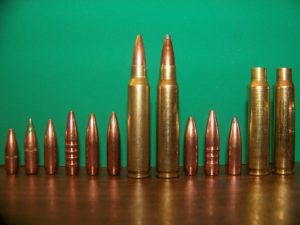How to Begin Prepping: A Comprehensive Guide
Prepping is a term used to describe the act of preparing for the worst-case scenario, be it a natural disaster, a power outage, or an economic collapse. While it may seem daunting, prepping can be an empowering and fulfilling experience. In this article, we will guide you through the steps of how to begin prepping, from setting your goals and creating a plan to choosing the right gear and storing your supplies.
Table of Contents
- Introduction
- Set Your Goals
- Define Your Why
- Determine Your Needs
- Assess Your Risks
- Create a Plan
- Make a Checklist
- Choose Your Approach
- Start Small
- Gather Your Gear
- Basic Prepping Gear
- Food and Water Storage
- Emergency Communication Devices
- Build Your Supplies
- Stock Up on Essentials
- Store Your Supplies Properly
- Conclusion
- FAQs
1. Introduction
Prepping is not just for doomsday preppers. It’s a practice that can benefit anyone who wants to be prepared for emergencies or unexpected situations. Whether it’s a power outage, a natural disaster, or a personal emergency, being prepared can mean the difference between life and death. But where do you begin? In this guide, we will walk you through the steps of how to begin prepping, so you can be ready for whatever comes your way.
2. Set Your Goals
Before you start prepping, it’s essential to define your goals. What do you want to achieve? What are you preparing for? Setting your goals will help you determine what you need and how to prioritize your efforts.
Define Your Why
The first step in setting your goals is to define your why. Why are you prepping? Are you preparing for a specific event, such as a hurricane or earthquake? Are you concerned about the state of the economy or political instability? Knowing your why will help you stay motivated and focused.
Determine Your Needs
Once you’ve defined your why, you need to determine your needs. What do you need to prepare for the event you’re concerned about? For example, if you’re worried about a hurricane, you’ll need to prepare for flooding, power outages, and food and water shortages.
Assess Your Risks
Finally, assess your risks. What are the most likely scenarios you’ll face? What are the risks specific to your location? For example, if you live in a flood-prone area, you’ll need to prepare for flooding, while if you live in a wildfire-prone area, you’ll need to prepare for wildfires.
3. Create a Plan
Once you’ve set your goals, it’s time to create a plan. A plan will help you stay organized and focused, and it will ensure that you have everything you need when you need it.
Make a Checklist
The first step in creating a plan is to make a checklist. A checklist will help you keep track of what you need and what you’ve already prepared. Your checklist should include everything from food and water to medical supplies and communication devices.
Choose Your Approach
Next, choose your approach. There are two main approaches to prepping: minimalist and comprehensive. The minimalist approach focuses on preparing for the bare minimum, while the comprehensive approach involves preparing for every possible scenario. Choose the approach that makes sense for you and your goals.
Start Small
Finally, start small. Prepping can be overwhelming, but it’s essential to start small and build from there. Start by preparing for the most likely scenarios, such as power outages or water shortages, and then expand your supplies as you have the resources.

4. Gather Your Gear
After you’ve created your plan, it’s time to gather your gear. Your gear should be tailored to your specific needs and goals, and it should include both basic prepping gear and specialized equipment.
Basic Prepping Gear
Basic prepping gear includes items that will help you survive for a short period without power or access to food and water. This gear includes things like a first aid kit, a multi-tool, a flashlight, and a reliable water filter.
Food and Water Storage
In addition to basic prepping gear, you’ll also need to store food and water. The amount of food and water you need will depend on your goals and the size of your household. A good rule of thumb is to have at least three days’ worth of food and water for each person in your household.
Emergency Communication Devices
Finally, you’ll need to have a way to communicate in case of an emergency. This includes a reliable radio, a cell phone charger, and a way to charge your devices without power. Consider investing in a solar-powered charger or a hand-crank charger to ensure that you can stay connected even without electricity.
5. Build Your Supplies
Once you have your gear, it’s time to build your supplies. This includes everything from food and water to medical supplies and hygiene products.
Stock Up on Essentials
Start by stocking up on essentials like non-perishable food items, water, and medical supplies. You should also have a supply of prescription medications, if necessary, and hygiene products like toilet paper and hand sanitizer.
Store Your Supplies Properly
In addition to stocking up on supplies, it’s essential to store them properly. Your supplies should be stored in a cool, dry place, and they should be protected from pests and other potential hazards. Consider investing in airtight containers and mylar bags to help prolong the shelf life of your supplies.
6. Conclusion
Prepping may seem overwhelming, but it doesn’t have to be. By setting your goals, creating a plan, and gathering your gear and supplies, you can be ready for whatever comes your way. Remember to start small, prioritize your efforts, and stay organized. With a little preparation and planning, you can rest easy knowing that you’re ready for anything.
7. FAQs
- Do I need to be a doomsday prepper to start prepping?
No, prepping is for anyone who wants to be prepared for unexpected situations.
- How much food and water should I store?
A good rule of thumb is to have at least three days’ worth of food and water for each person in your household.
- What should I include in my prepping gear?
Basic prepping gear should include a first aid kit, a multi-tool, a flashlight, and a reliable water filter.
- How do I store my supplies properly?
Your supplies should be stored in a cool, dry place, and they should be protected from pests and other potential hazards.
- Do I need to invest a lot of money to start prepping?
No, you can start small and build your supplies over time.


